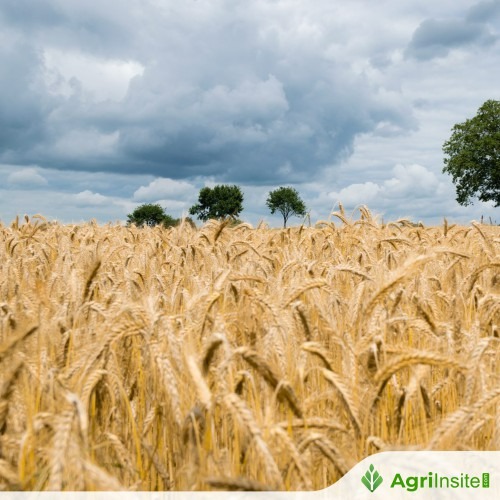Egypt aiming for wheat self-sufficiency

Egypt is actively working to reduce its reliance on wheat imports through initiatives to expand domestic production. This includes investments in modern irrigation systems, high-yielding wheat varieties, and improved storage facilities. Despite an increase in production, Egypt still faces a significant wheat deficit, relying on imports to meet demand. The country’s wheat consumption is driven by a large population and a subsidized bread program. Efforts are underway to reduce post-harvest losses and improve efficiency, with the goal of achieving self-sufficiency in the coming years.
CAIRO, EGYPT — Egypt, Africa’s biggest wheat producer and consumer, has been implementing in recent years an ambitious national wheat market expansion plan aimed at achieving self-sufficiency in wheat production and reducing its wheat import bill that increased to $3.8 billion between 2017 and 2021. The government, through the Ministry of Agriculture and Land Reclamation, and the country’s private sector have been investing in wheat research and development, and improving access to financing for the wheat farmers to boost their production and marketing capabilities.
The investment also is being channeled to promote the adoption of modern technologies in wheat growing and best practices, especially utilization of modern irrigation systems on old and reclaimed land. Egypt’s wheat production for the 2024-25 marketing year is estimated at 9.2 million tonnes, slightly higher than the 9 million tonnes the previous year. The government attributes the rise in output to the 50,000-hectare year-on-year increase in wheat planted area, now at 1.4 million. Although Egypt’s production volumes rose in the last marketing year, the output was still well below national consumption of more than 20 million tonnes per year.
With a population of 106 million people, Egypt’s wheat consumption levels are expected to reach 20.65 million tonnes in the short term, an increase likely to be sustained through 2030 when the population is projected to reach 124 million people. Egypt’s food subsidy scheme also is expected to continue to drive the country’s wheat consumption demand higher. The subsidy program allows beneficiaries to acquire a smart ration card from the government to access subsidized items such as bread. The scheme enables beneficiaries to have a bread allowance of five baladi bread loaves per beneficiary per day at the subsidized price for a maximum of four beneficiaries per household, according to the International Food Policy Research Institute (IFRI). The Institute said an estimated 73 million people benefited from the baladi bread subsidy program in 2023. This scheme is expected to contribute to the high wheat consumption levels in Egypt. Moreover, Egypt runs a parallel flour subsidy program that gives consumers the opportunity to obtain 10 kilograms of subsidized flour monthly per person at a price of 63 cents “as an alternative to subsidized bread.”
The USDA estimated the cost of Egypt’s flour subsidy program in the 2024-25 national budget at $109 million. Ambitious agenda Egypt relies on wheat imports to address a more than 10-million-tonne deficit annually, which made it the world’s biggest wheat importer in 2021, accounting for 8.3% of global wheat imports that year. However, the Egyptian government is not banking on imports to meet the elastic wheat demand. It is proceeding with its agenda of ramping up wheat production, improving terms of procuring the produced wheat from farmers, expanding wheat storage capacity, and deploying modern irrigation systems in reclaimed and old wheat growing regions. Furthermore, the North Africa country hopes to reduce post-harvest losses estimated at nearly 21%, or 4.4 million tonnes, in the medium term from both the local and imported wheat by focusing on efficiency in crop growth as well as practices during the marketing and storage operations.
At the production level, Egypt has not only increased wheat acreage by bringing in new lands, but it also has enhanced yields through use of modern innovative irrigation systems. In fact, Egypt has been investing in the Mechanized Raised-Bed Irrigation (MRBI) technology to achieve its short- to long-term wheat production volumes and quality. The technology “is adapted to dryland conditions and improves water use efficiency, improving farmers’ livelihoods through increased farm productivity with fewer inputs,” according to the International Center for Agricultural Research in the Dry Areas (ICARDA). The use of this technology is critical in Egypt’s mission to improve wheat yields per hectare in the country’s overall plan to boost production to 11.5 million tonnes by 2025, according to a report by the African Development Bank (AfDB). Egypt’s Agricultural Research Center (ARC) has been “promoting more raised-bed cultivation of wheat using early maturing and high-yielding varieties, as well as increasing the number of certified seeds distributed to farmers,” according to the USDA’s September 2024 report. The raised-bed wheat plantings are gaining traction in Egypt because of their potential to increase grain yield by 30% as well as increasing water-use efficiency by 75%. The technology also has been lauded for its potential to save up to 25% of irrigation water and reduce seed requirements by up to 15%. Elsewhere, the government has partnered with research and development agencies to spearhead wheat breeding programs to develop high-yielding varieties that can tolerate harsh climatic conditions such as those in Egypt. It is through these wheat breeding programs that Egypt anticipates increasing its wheat yield to more than 7 tonnes per hectare.
“Wheat production in Egypt has improved through the development of new breeding and cultivation practices, which have led to the spread of new high-yielding varieties,” the USDA report said. Financing plan Egypt also has enhanced government-driven financing schemes for the benefit of wheat farmers. This includes the offer of a higher price for wheat that is procured by the General Authority for Supply Commodities (GASC), a government agency implementing wheat tenders for the country’s bread subsidy program. For instance, the government allocated $601 million in 2022 for the GASC and Agricultural Bank of Egypt to finance the procurement of wheat from farmers. In 2024, the government procured 3.6 million tonnes, with 3.43 million tonnes allocated to wheat millers, 120,000 tonnes for seeds and 50,000 for durum wheat. In November 2023, the government announced a guaranteed procurement price of $219.75 for every 150 kilograms. This price would be guaranteed only if the wheat growers sold 60% of their output to the government. “High government procurement prices have also encouraged farmers to plant more wheat,” the USDA said. The prospect of Egypt achieving higher wheat production shifts the focus to the country’s key wheat trade partners such as Russia, Ukraine and Romania, which combined to sell an estimated 12.5 million tonnes to the North African country in 2023.
The import volumes were 11% higher than the earlier official projections. The USDA attributed the surge in wheat import volumes to “increased demand by the private industry and investment in silos to store more wheat.” The share of private sector wheat imports was estimated at 51.6% in 2023-24 while the GASC purchased the remaining 48.4%. At least 61% of Egypt’s imported wheat in the 2023-24 marketing year came from Russia, with 24% coming from Ukraine and the rest from Romania. Egypt also is addressing the problem of post-harvest losses in the wheat industry. If the problem is addressed, analysts said it would yield an adequate wheat supply for at least 21.2 million people, assuming average wheat consumption of 145 kilograms per capita. It is projected that Egypt could reduce its dependency on wheat imports by 37% and save an estimated $1.1 billion by reducing the post-harvest losses. Another initiative to bolster Egypt’s wheat industry and tackle post-harvest losses is investing in modern wheat storage facilities with capacity of up to 5.2 million tonnes. According to the AfDB, Egypt has made progress by “increasing public and private investments by establishing new central and subsidiary silos at newly reclaimed lands to increase storage capacity to buffer against international wheat price shocks.” With a surge in its national population and increasing uncertainty in the stability of the international wheat supply chain due to growing global political conflicts, Egypt’s drive to be self-sufficient in wheat could not have come at a better time.
Trends Commodities Market Segments flour wheat USDA report Trade food security imports Related Articles South Africa aiming for self-sufficiency in oilseeds Brazil pushes toward wheat self-sufficiency Nigeria seeking grain self-sufficiency Algeria seeks self-sufficiency in grain Corn, rice self-sufficiency campaign distorting Indonesia’s market
To read more about Wheat News continue reading Agriinsite.com
Source Link : World Grain
















